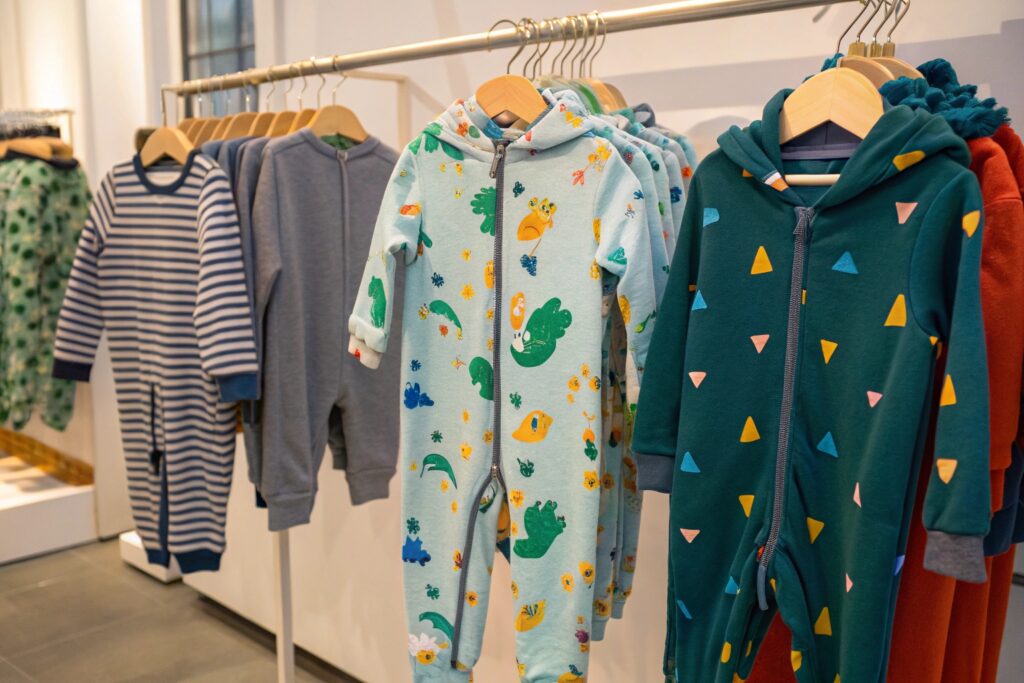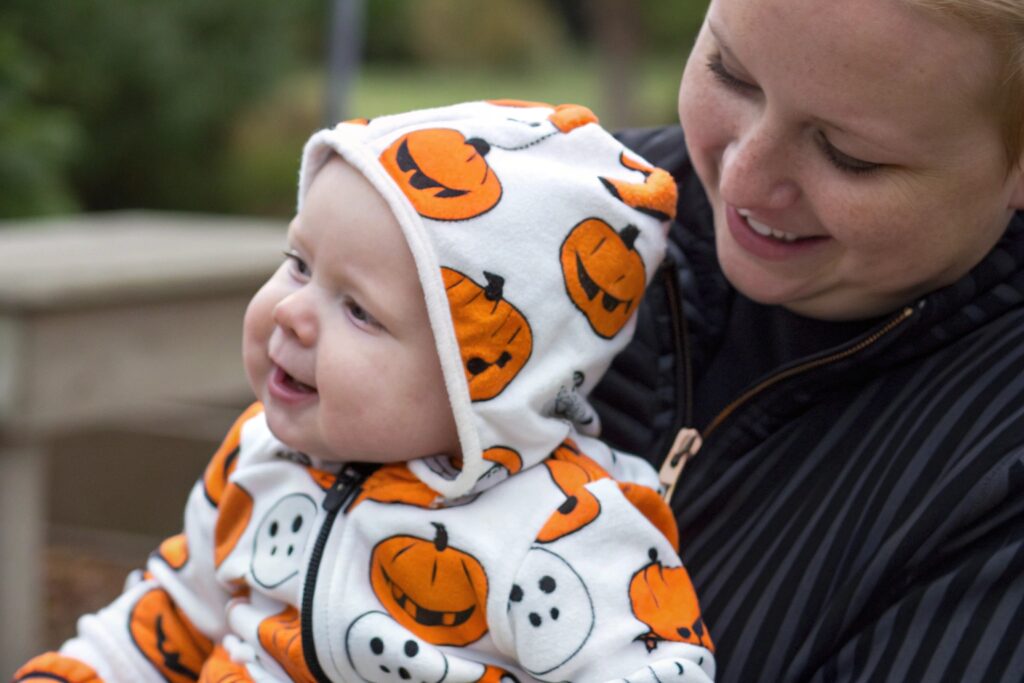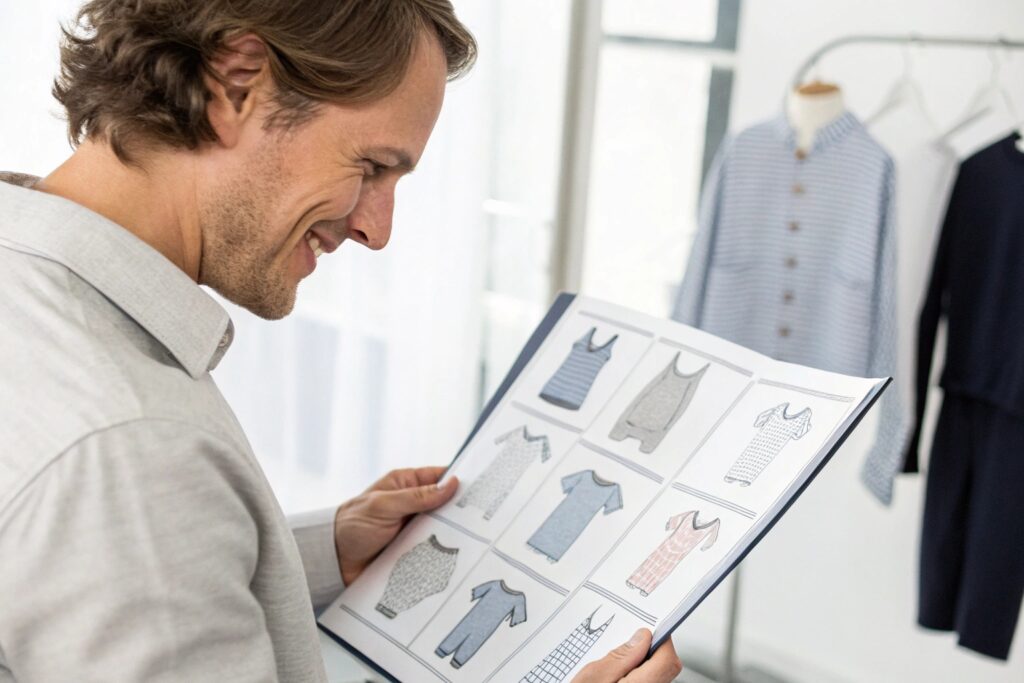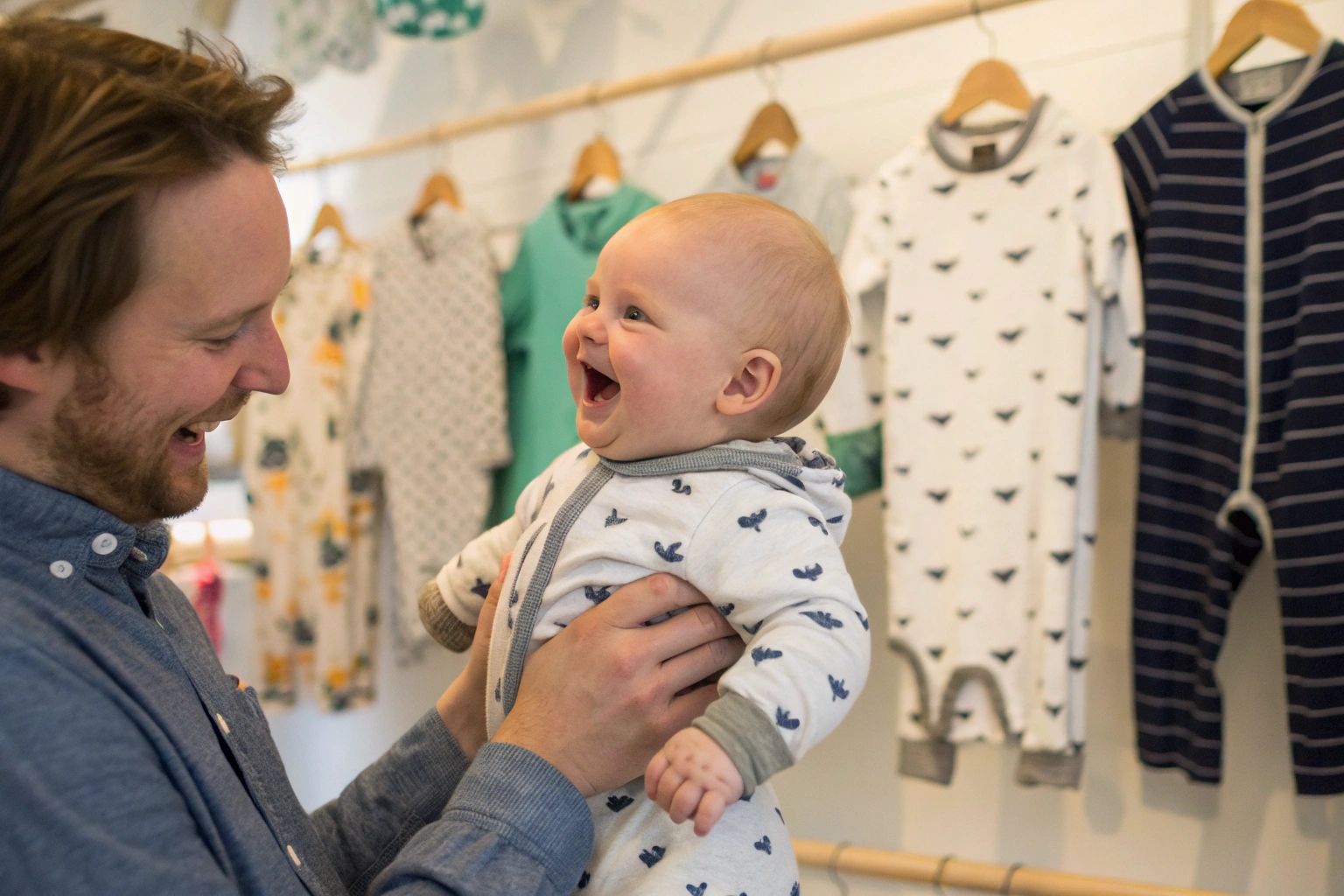The baby apparel market is full of big brands and fast fashion. How can a smaller label stand out and attract loyal customers?
Yes—customization helps you compete by giving parents unique, personal products that build emotional connection and boost your brand value.
In this guide, I’ll explain how we help babywear brands grow by offering smart, scalable customization—from names on onesies to full made-to-order collections.
Why Parents Prefer Personalized Baby Clothing?
Parents don’t just want baby clothes—they want items that feel special. And personalization turns ordinary garments into memories.
Personalized babywear helps parents feel emotionally connected to the product, making it more meaningful and more likely to be bought as a gift or keepsake.

How does emotional value drive demand for customized baby apparel?
Here’s what happens when a baby’s name appears on a romper:
- Parents feel proud and emotionally invested
- Grandparents or friends are more likely to gift it
- The item becomes a keepsake, not just clothing
- The brand behind it earns trust and loyalty
One client of ours launched a “Welcome Home” collection—each piece included the baby’s name and birth year. Their website traffic doubled within three weeks, and their return rate dropped below 3%.
That’s the power of emotion-driven design.
In what situations do parents most often seek personalized babywear?
These are the most common use cases:
| Occasion | Popular Personalization Elements |
|---|---|
| Baby Showers | Name, due date, nickname |
| Birth Announcements | "Born in [Year]", custom message |
| Holidays (Christmas, etc.) | Themed prints with baby's name |
| Monthly Milestone Photos | Numbered bodysuits, personalized props |
| Sibling Reveals | “Big Brother / Little Sister” sets |
When you offer styles tailored for these moments, you don’t just sell clothes—you offer memories in fabric.
How Custom Features Boost Brand Recognition?
Custom designs don’t only attract attention—they make your brand unforgettable. That’s how you win repeat buyers in a crowded market.
Custom features help your babywear brand stand out and become instantly recognizable, even in a sea of similar products.

What types of customization support both design identity and consumer loyalty?
Here’s what high-performing baby brands do differently:
- Signature prints only available in your store
- Exclusive trims like logo buttons or themed snaps
- Personalized tags or messaging inside the garment
- Packaging that matches your design theme
We once worked with a U.S. client who created seasonal forest-animal prints—custom drawn and printed only for their store. Parents instantly recognized their collection on social media, and influencers started tagging them unprompted.
That’s branding done through personalization.
How does branding through personalization create long-term value?
When parents share personalized products online, they’re not just promoting the product—they’re promoting your brand.
Here’s what it leads to:
- More shares = more reach
- More recognition = fewer discounts needed
- More emotional value = fewer returns
We helped one babywear brand launch an embroidered name service. They charged 25% more and still sold out their seasonal drop in 6 days.
What Customization Options Are Trending in Babywear?
Customization has come a long way—it’s no longer just initials on a bib. Now, tech and design make it easy to offer creative, scalable options.
Trending babywear customizations include name printing, seasonal themes, mix-and-match gift sets, and packaging personalization.

What kinds of customization are most popular with today’s parents?
Here’s what sells right now:
| Custom Option | Details Parents Love |
|---|---|
| Printed Names | Front or back of bodysuits, soft prints |
| Embroidered Initials | On caps, bibs, blankets |
| Birth Year / Zodiac Themes | “Born in 2025”, “Leo Baby” prints |
| Color + Size Choices | Let parents choose tones or fit |
| Bundled Gift Sets | Personalized packaging, message card |
We’ve seen strong growth in eco-themed personalization, too. One client let customers choose organic colors with names in earthy tones—and buyers loved the eco-meets-personal vibe.
How do brands choose customization that’s practical and scalable?
It starts with smart design:
- Use base styles with changeable graphics
- Print in batches to reduce cost
- Offer simple choices first—name, date, size
- Upgrade to embroidery or design layering later
At Fumao, we help clients plan seasonal sets with 2–3 personalized elements. That keeps it affordable, while still delivering variety.
Tips for Offering Made-to-Order Baby Apparel Efficiently?
Custom sounds good—until production gets messy. Made-to-order can be profitable if you keep it simple, clear, and organized.
You can offer made-to-order babywear by streamlining your design options, automating order tracking, and working with a factory that supports flexible runs.

How do you manage custom orders without delays or errors?
Here’s our step-by-step system that works:
- Template-based designs – Start with 4–5 editable base styles
- Digital mockups – Show parents exactly what they’ll receive
- Order form logic – Set up dropdowns for color, name, size
- Batch production – Group similar orders to reduce setup time
- Quality check protocol – Inspect prints, labels, and packaging
We also help brands add a custom SKU system. That way, your team can quickly track every order’s details—even if each one is slightly different.
What tools or partners can help scale personalized babywear?
Don’t do everything manually. These tools help:
| Tool/Partner Type | Benefit |
|---|---|
| Print-on-demand plugins | Automate design upload & order flow |
| ERP software | Track inventory and lead times |
| Fulfillment partners | Handle packing and shipping |
| Custom-friendly factories | Offer labeling, embroidery, low MOQ |
At Fumao, we support small brands with flexible MOQs and fast sampling. One brand we worked with launched a made-to-order shop using our weekly shipping plan—and scaled to 1,500 orders/month in under six months.
Conclusion
In the babywear market, customization gives you a real edge. It turns products into keepsakes, builds your brand, and keeps buyers coming back—if you do it right.










